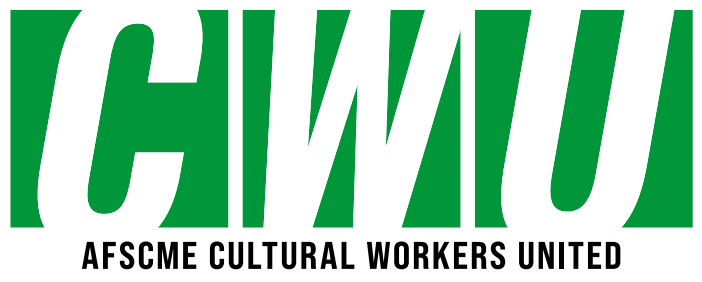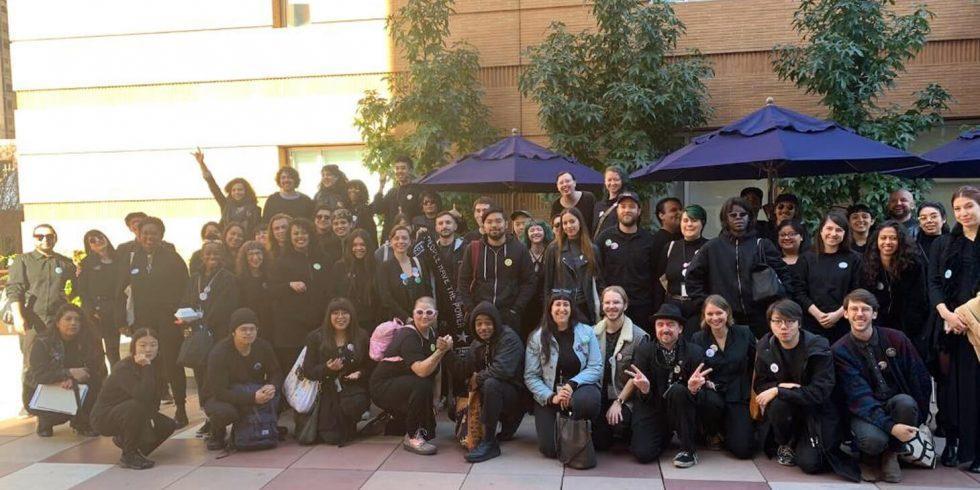MOCA employees decided it was time for change.
On November 22, 2019, 50 employees from the Los Angeles Museum of Contemporary Art(MOCA) marched into the office of Director Klaus Biesenbach to read a statement from over 120 employees (including gallery attendants, curators, audio visual techs, and others) which announced that they were forming their union with AFSCME, and asked the museum to voluntarily recognize their union.
How did the organizing campaign get started?
MOCA employees cited low wages, lack of benefits, schedule insecurity, and high turnover as reasons behind their decision to organize. Kit Lamb, a worker in the MOCA A/V department said their effort was about “coming together in solidarity as artists, craftspeople, and workers with the hopes of making MOCA a more democratic and humane workplace.”
Tired of being disrespected and undervalued, employees decided it was time to have a voice in the priorities of their museum and began meeting to discuss organizing their union. They then reached out to AFSCME Council 36, who had helped employees at another L.A. museum, the Museum of Tolerance, to form their union a couple of years earlier. Launching their union organizing campaign, they created an organizing committee of employees to spearhead the effort, then quietly recruited representatives from all departments, job classifications, and shifts to create a network that would allow them to communicate important information quickly and mobilize support when needed.
Getting organized was both empowering and intimidating.
Once a strong majority of MOCA employees had expressed their desire to join with AFSCME by signing a union card, a delegation of workers delivered a public letter to the administration demanding they recognize their union. MOCA management initially reacted negatively to the idea of negotiating improvements to the workplace with employees, saying they didn’t think that having a union would be in the “best interests” of workers. Adding to the tension, employees at another L.A. museum, the Marciano Art Foundation (MAF), had been laid off only weeks earlier in retaliation for union organizing.
As scary as it was to challenge their bosses in such a public manner, it was also extremely empowering. MOCA employees knew that none of them alone could change the problems at the museum – let alone their industry – but they could do something about it if they stuck together. They also publicly supported their laid-off MAF counterparts in a series of protests at GUESS Jeans stores nationwide (MAF is owned by the same brothers who founded GUESS Jeans). Their solidarity paid off. Two weeks after they demanded recognition of their union and joined the MAF protests, MOCA reversed its earlier position and announced they would voluntarily recognize AFSCME as the exclusive bargaining representative of its employees.
“We have spent the last two weeks thoroughly considering the staff’s initiative through the lens of MOCA’s vision of being a civic-minded institution,” the museum stated, “and we concluded that we want to be supportive of this effort.”
“We were thrilled when MOCA announced it would voluntarily recognize our union,” said Los Angeles Museum of Contemporary Art gallery attendant, Christine Samples. “It wasn’t easy, and sometimes it was scary. But we stuck together.” They saw themselves as part of a larger movement of museum workers nationwide who had recently made the decision to unionize, including New York’s Metropolitan Museum of Art, the Brooklyn Museum, the American Museum of Natural History, and the Museum of Tolerance in L.A. The national movement of museum workers deciding to unionize has been driven by industry-wide problems such as a lack of transparency that allows for ultra-rich administrators and board members at the top, but poverty level wages for employees – many of whom have advanced degrees.

